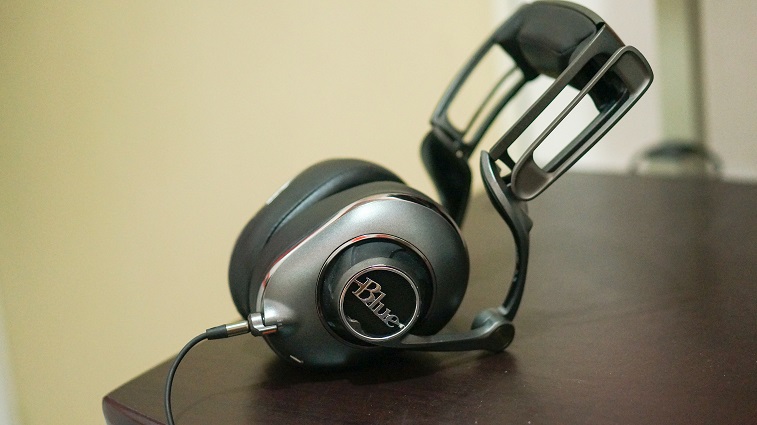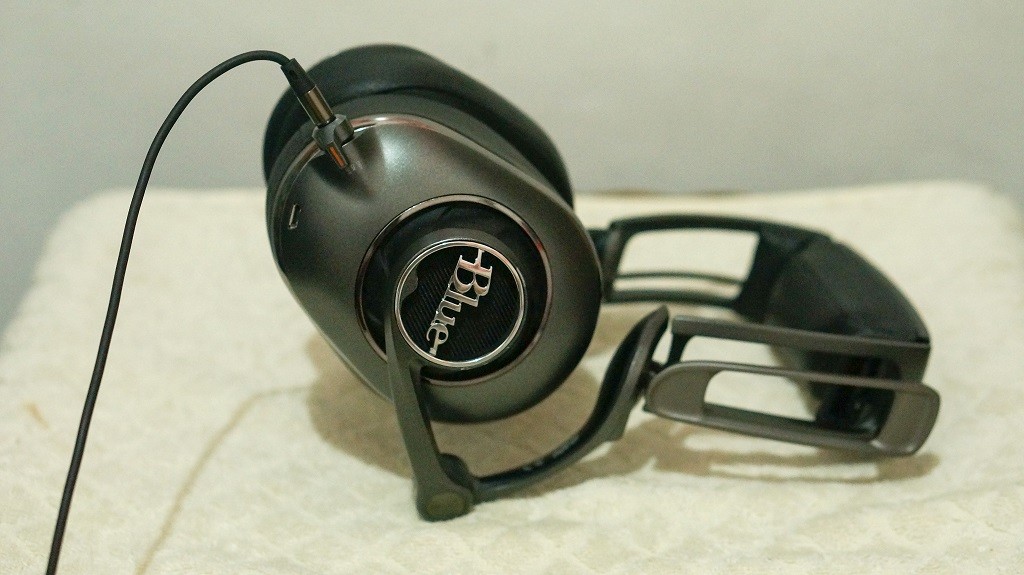Sound Quality
I have the most experience listening to Blue Mo-Fi in passive mode so that’s what I will focus on in this section although I’ll still touch a bit on the ‘on’ and ‘on+’ modes of the headphone. Do note that there’s NOT much difference in sound signature with each of the modes.
Now keep in mind that Blue is marketing this heavily as an audiophile headphone and while I don’t think it’s one, it doesn’t mean it sounds bad even for $349.
The Blue Mo-Fi has a good warm sound signature that is fairly flat from bass to midrange. Overall bass is a little bit loose and wooly-sounding but it doesn’t bleed into the mids section. It has that nice hump in the upper bass that gives you that warmth and texture. There’s a little dip around the low midrange area which I suspect is the reason why the headphone sounds darker than what the measurements show. The voice does not sound withdrawn though and it has great clarity up until the upper midrange area. Treble is a little indistinct and slightly splashy yet lower in level. This makes this headphone not fatiguing or sibilant to listen to which is great however it also tends to make the music dull-sounding at times.
I compared this to Audio Technica ESW9, NAD Viso HP50 and MSR7 and I think it bests the ESW9 in overall clarity while it’s comparable to the HP50 in terms of its signature. The HP50 has a flatter response and is more resolving. The MSR7 is a different headphone in that it’s brighter than all three. It is bass light compared to MoFi however the MoFi can compete well with all these headphones in terms of conveying vocals well. I wouldn’t call it lush but there’s that sweetness that makes the sound more pleasing.
Due to its treble, it does not image as well as the HP50 and MSR7 and instrument separation is on the average side for a sealed headphone. Soundstage is slightly bigger than all headphones except the HP50.
Active ON mode
This mode is very similar to the passive mode and I mean very close especially when you look at the measurements. Subjectively I would say there’s more bass hump in the upper bass which makes it a little fuller sounding. That little boost didn’t affect much of the spectrum so I would say this mode is great if you want slightly more oomph in the bass than normal.
Active ON+ mode
I’d be blunt that I didn’t like this mode because it makes the bass more prominent that it starts bleeding to the midrange and becomes a bit overpowering. It’s still not one-note bass bloated type but you certainly start to feel that upper bass bleeding into the rest of the spectrum. You also get to hear some floor noise when you have this turned and that noise can get louder on mobile devices if you’re listening on loud levels.
I read in some reviews that this mode makes the headphone more ‘fun and lively’ sounding and while I disagree about it, I understand how some people can feel that way.
I should mention that when you turn on the two modes you have to make sure you have the volume low on your source because it can go really loud when the modes are enabled.
Conclusion
Do I recommend this pair of headphone? Well yes! If you can afford it, and don’t mind its funky looks then go ahead and get it. It sounds great and the prize is justified not just with the sound but with all extra features, accessories and build quality that it has.
Is this a decent headphone if we’re talking about a good price/performance ratio? No. There are headphones that perform the same if not better than the Blue Mo-Fi headphone. The NAD Viso HP50 and Audio-Technica MSR7 which I mentioned above fair better than the MoFi. If you go up to near $400, then the Oppo PM3 is by far better than the MoFi. Both the Focal Spirit Professional and Classic are also moderately better than this headphone at similar price range.
All in all, it depends on your priorities. The Mo-Fi after all is a decent sounding headphone, has features that other headphones don’t have and does fairly well (or doesn’t fail too badly) in most areas. Check out the Blue Mo-Fi headphones on Amazon if you’re interested in getting a pair.



